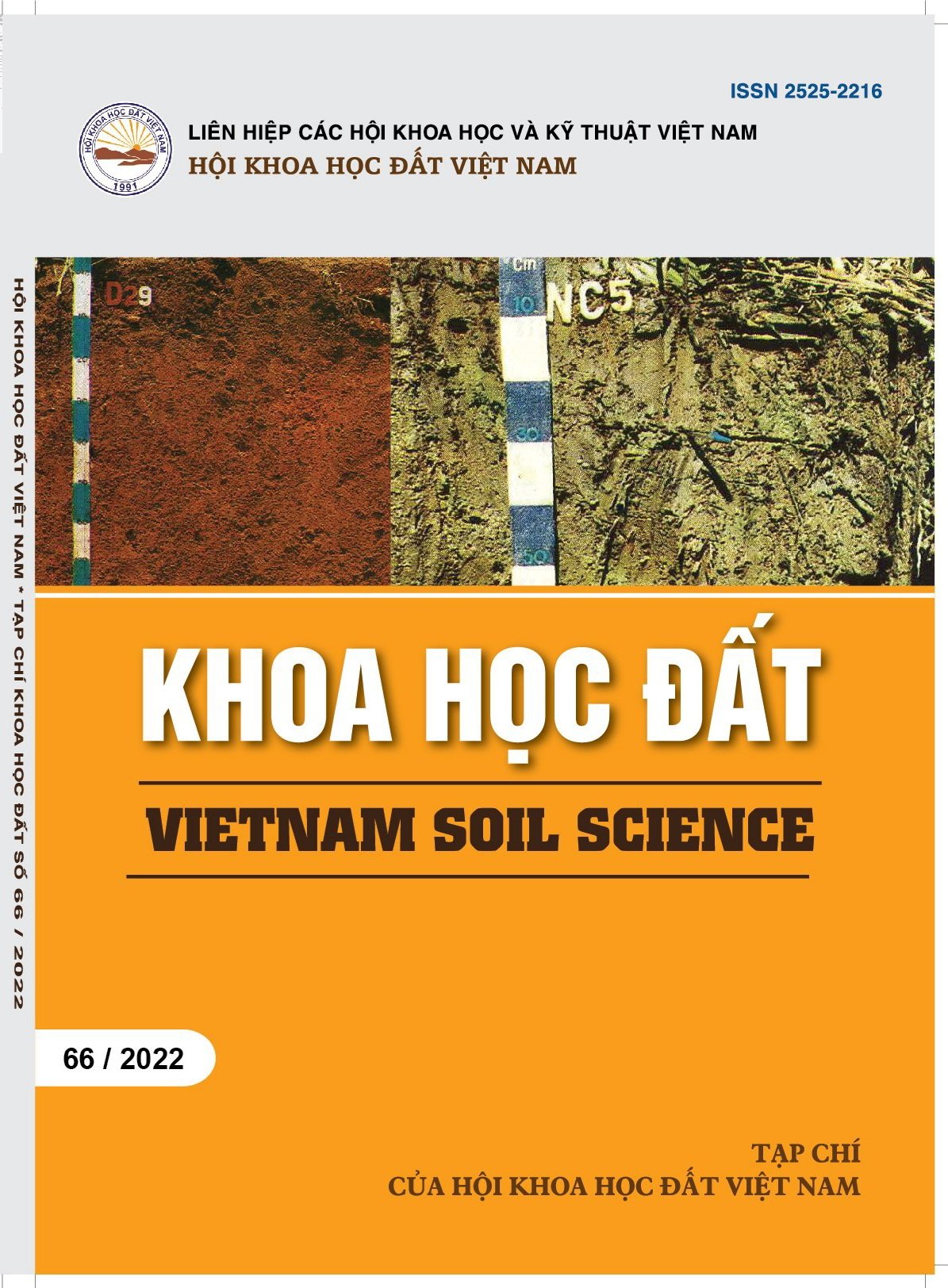NGHIÊN CỨU ĐẶC ĐIỂM VÀ SỰ TÍCH LŨY VI NHỰA TRONG ĐẤT BÙN TRẦM TÍCH SÔNG CẦU, ĐOẠN CHẢY QUA THÀNH PHỐ THÁI NGUYÊN, TỈNH THÁI NGUYÊN
Nguyễn Ngọc Sơn Hải1, Nguyễn Minh Kỳ1, Nguyễn Ngọc Nông1
[1] Trường Đại học Nông Lâm – Đại học Thái NguyênTÓM TẮT
Mức độ nhiễm vi nhựa trong bùn trầm tích Sông Cầu đoạn chảy qua thành phố Thái Nguyên có hàm lượng dao động từ 250-900 hạt/kg, tại VT1 (đoạn phía Nam thành phố) 900±3,7 hạt/kg, sau đó đến VT3 (đoạn trung tâm thành phố) và VT2 (đoạn phía Bắc thành phố) với giá trị trung bình tương ứng là 550,0±4,8 hạt/kg và 250±2,3 hạt/kg. Các hạt vi nhựa có kích thước từ trung bình đến lớn, với các hình dạng phổ biến là mảnh (59,2%), bọt (20,4%), sợi (13,7%) và film (6,7%), cùng các màu sắc chính như vàng, trắng/trong suốt, nâu, xanh da trời. Thành phần vi nhựa bao gồm Polyethylene (PE), Polyethylene Terephthalate (PET), Natri Alginate Polyme (Sodium Alginate – SA), Ethylene Propylene Rubber (EPR), cao su Neoprene (CR), Natural Latex Rubber (NLR), Ethylene Propylene Diene Monomer (EPDM), Polypropylene (PP) trong đó PE, PET, PP chiếm tỷ lệ đa số (68,3%). Vi nhựa phân bố không đồng đều theo không gian, phản ánh ảnh hưởng tác động của mật độ dân số và các hoạt động sinh hoạt đến sự ô nhiễm vi nhựa. Kết quả này nhấn mạnh sự cần thiết của các biện pháp quản lý bền vững để bảo vệ nguồn tài nguyên nước cũng như đất bùn thải trầm tích Sông Cầu trong bối cảnh áp lực từ phát triển kinh tế-xã hội và sử dụng sản phẩm nhựa ngày càng gia tăng.
Từ khóa: vi nhựa, đặc điểm, tích luỹ, bùn trầm tích, Sông Cầu.
SUMMARY
Study on characteristics and accumulation of microplastics in sedimented soil of Cau river, flowing through Thai Nguyen city, Thai Nguyen province
Nguyen Ngoc Son Hai1, Nguyen Minh Ky1, Nguyen Ngoc Nong1
1Thai Nguyen University of Agriculture and Forestry
The level of microplastic contamination in Cau River sediment sludge flowing through Thai Nguyen city ranges from 250-900 particles/kg in VT1 (Southern part of the city) the concentration is 900±3.7 particles/kg, followed by VT3 (central part of the city) and VT2 (Northern part of the city) with an average value of 550.0±4.8 particles/kg and 250±2.3 particles/kg, respectively. Microplastic particles range in size from medium to large, with common shapes being pieces (59.2%), foam (20.4%), fibers (13.7%), and films (6.7%), and main colors such as yellow, white/transparent, brown, blue. Microplastic components include polyethylene (PE), Polyethylene Terephthalate (PET), Sodium Alginate Polymer (SA), Ethylene Propylene Rubber (EPR), neoprene rubber (CR), Natural Latex Rubber, and ethylene propylene diene monomer (EPDM), Polypropylene (PP) of which PE, PET, PP account for the majority (68.3%). Microplastics are unevenly distributed in space, reflecting the impact of population density and daily activities on microplastic pollution. This result emphasizes the need for sustainable management measures to protect water resources as well as Cau River sediment and mud in the context of pressure from socio-economic development and increasing use of plastic products.
Keywords: microplastics, characteristics, accumulation, sediment, Cau River.
Người phản biện: TS. Nguyễn Chí Hiểu
Email: nguyenchihieu@tuaf.edu.vn
Ngày nhận bài: 19/02/2025
Ngày thông qua phản biện: 21/3/2025
Ngày duyệt đăng: 25/3/2025
 Tạp chí
Tạp chí



